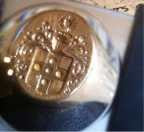Photography and Construction
These books - a few classics and, perhaps, a classic in the making, are not overtly concerned with construction in the sense of the built environment. Still, they are worthwhile reading for those of us who must use cameras in our work.
The documentation of construction work in progress can be approached from several vantage points. It has a QC function, a historical function and, if done well, a marketing function. In-progress shots can tell a story of materials and assemblies that can help make important points about the process and value of construction practices linked to energy efficiency and sustainability.
Good photography can help share and generate enthusiasm for quality architecture. Geometry, light, space can be, to some extent, captured and shared through the photographic image. The images are not a substitute, but can be thought of and used as enticements to curiosity.
Capturing existing structures can bring satisfaction to photographer and viewer. We can learn from studying the geometric, documentary abstractions that make up much of the art of architectural photography. We get to share a 'vision,' as it were.
If you 'google' ruin porn you will find many articles and images of ravaged areas of Detroit and other metro areas in decay. There are interesting debates about the value and bias inherent in much of this work.
To me, it is a bit more complicated. I first started taking pictures of old buildings years ago. Some were/are very well preserved and others in very bad condition. I shared the images of buildings in various states of ruin with architects and other builders as reminders of the destiny of our life's work. It was/is a bittersweet call to mindfulness about the temporary nature of our creations.
Recently I have started to think about ruins again. It is not always an indication of carelessness and neglect -not if we are looking forward. In some neighborhoods neglected buildings and their photographs are the 'before' pictures of a renaissance in the making. Preservation starts somewhere.
I love taking pictures - buildings in particular - and it requires a sense of responsibility and thoughtfulness and sensitivity. Think about it.
The documentation of construction work in progress can be approached from several vantage points. It has a QC function, a historical function and, if done well, a marketing function. In-progress shots can tell a story of materials and assemblies that can help make important points about the process and value of construction practices linked to energy efficiency and sustainability.
Good photography can help share and generate enthusiasm for quality architecture. Geometry, light, space can be, to some extent, captured and shared through the photographic image. The images are not a substitute, but can be thought of and used as enticements to curiosity.
Capturing existing structures can bring satisfaction to photographer and viewer. We can learn from studying the geometric, documentary abstractions that make up much of the art of architectural photography. We get to share a 'vision,' as it were.
If you 'google' ruin porn you will find many articles and images of ravaged areas of Detroit and other metro areas in decay. There are interesting debates about the value and bias inherent in much of this work.
To me, it is a bit more complicated. I first started taking pictures of old buildings years ago. Some were/are very well preserved and others in very bad condition. I shared the images of buildings in various states of ruin with architects and other builders as reminders of the destiny of our life's work. It was/is a bittersweet call to mindfulness about the temporary nature of our creations.
Recently I have started to think about ruins again. It is not always an indication of carelessness and neglect -not if we are looking forward. In some neighborhoods neglected buildings and their photographs are the 'before' pictures of a renaissance in the making. Preservation starts somewhere.
I love taking pictures - buildings in particular - and it requires a sense of responsibility and thoughtfulness and sensitivity. Think about it.



<< Home